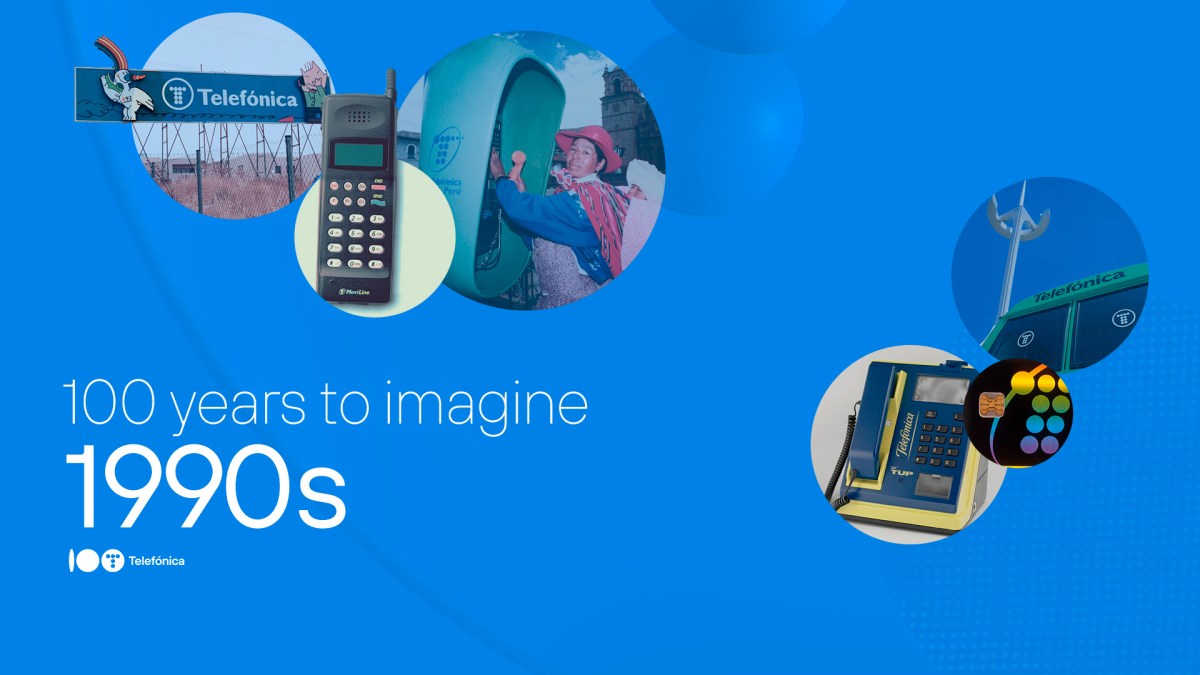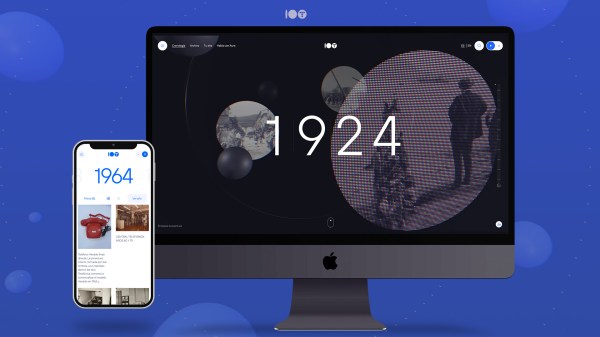The 1990s began with the end of the Cold War and the consequent geopolitical reordering resulting from the disintegration of the Soviet Union, Yugoslavia and Czechoslovakia.
At the EU level, the Maastricht Treaty ensured that Community integration continued to progress with the approval, among other things, of the entry into circulation of the single currency, scheduled for 2002, as was the case.
On the scientific front, Dolly the sheep became the first mammal to be cloned in history. And in the field of technology, the decade saw the arrival of the first website in history, DVDs and WiFi.
1990: Moviline was born
The beginning of the decade also saw the birth of the first popular analog cell phone brand: Moviline. It reached 1.5 million customers, although its 1G technology was overtaken by the GSM standard, the European telephony system with advantages such as caller identification, voicemail and SMS. The brand and the service disappeared as such in 2004.
Also in 1990, the internationalization of the company became a reality: the arrival in Argentina and Chile were the first steps in this expansion process.
1991: 15 million lines
This year 15 million lines were installed in Spain, a figure that helped to greatly reduce the waiting list.
Internationalization in this case reached Venezuela, where Telefónica became the successful bidder in the privatization of the state-owned operator, acquiring 40% of the shares.
1992: the Barcelona Olympic Games and the Seville Expo, a litmus test for the telecommunications industry
This year is marked in the Spanish collective imagination by two major references: the Olympic Games in Barcelona and the Universal Exposition in Seville. In both events, “Telefónica, after major investments, ensured that all the facilities and venues of both historic events could provide technological coverage for visitors, workers and the media”.
That same year, in which Forma replaced Teide as the reference telephone in homes, a new plus came to help rural telephony. As our centenary website states, “TRAC, Telefonía Rural de Acceso Celular, was exactly that: the electronics of an analog cell phone -by Moviline at that time- connected to the fixed telephone at home. Thus, with the two great existing technologies supporting each other, it was possible to provide coverage to hundreds of thousands of homes and businesses in rural areas for decades, and Telefónica thus saw its last frontier covered”.
1993: the colored T arrives… and dancing
1993 became the year in which the waiting list for the installation of new lines came to an end, and new subscribers were given a commitment: the deadline would be a maximum of one week.
Internationalization reached Puerto Rico, in a year in which the logo changed again: the T of circles was still the essence, but with new features: they became colored, arranged diagonally and of different sizes, abandoning the perception of being a still T and becoming one that seems to dance.
1994: internationalization, unstoppable: Peru
Two major milestones mark this year, one in the domestic market and the other in the foreign market. On the one hand, with the privatization of Compañía Peruana de Teléfonos (CPT) and Entel-Perú and the acquisition of 35% of its shares, Telefónica took control of 90% of the country’s telephone service, in consortium with local partners.
On the other hand, Galicia became, despite its complex orography, the first rural region in the world with full access to fixed telephony.
1995: Movistar and InfoVía are born
In the middle of the decade, a revolution took place: the Internet and cell phones exploded at the same time. Under the advertising campaign ‘A star is born’, Movistar arrived in September 1995, reaching almost one million customers in one year.
That same year Telefónica launched InfoVía, a new service that constituted the company’s strategic bet to access the information highways. As we explained on the centenary website, “the transforming novelty of InfoVía was that by simply dialing 055, users of the telephone network, using a modem, could access their Internet Service Provider (ISP) at the price of an urban call, regardless of their geographic location. The new service was very well received and a year later, in 1996, there were already 215,000 users connected to InfoVía”.
This busy year also saw Telefónica boost ISDN applications, another type of connection that allowed Internet access without interfering with voice traffic prior to the popularization of ADSL.
1996: Internet explosion
Internet use continued to grow, with 320,000 Internet users in 1996, when there was a new change in the presidency, with Juan Villalonga taking over.
Internationalization reached Brazil, where “a consortium was created, formed by Telefónica (73%), RBS (17%), Telefónica Argentina (3%) and CTC (7%) for the purchase of 35% of CRT (Companhia Riogrande de Telecomunicaçoes), the fourth largest operator in Brazil, with fixed and mobile services and the first to be privatized in that country”.
1997: Telefónica becomes 100% private
One of the major milestones of the decade took place this year: Telefónica became a completely private company, in an operation in which the most optimistic forecasts were exceeded (191 million shares were placed) and the demand for shares exceeded 5.4 times the supply.
That same year, Telefónica inaugurated the National Operations Supervision Center (CNSO), a space in which 1,200 professionals supervised all elements of the network, making it one of the most advanced control centers in the world.
1998: Fundación Telefónica was born
The previous initiatives in support of art, progress and culture were concentrated in the Fundación Telefónica, which became the umbrella for all of the company’s social work.
That same year Telefónica changed its logo once again, abandoning the T and incorporating the full name with the corporate colors, dark blue and green.
As a curiosity, that same year residential customer service was consolidated into a single number that is still in use today: 1004.
1999: Spain, the first European country with ADSL
Voice and data could coexist through ADSL, the technology that popularized the use of the Internet in homes and businesses with a flat rate.
In October 1999, Telefónica launched its ADSL, becoming the first operator to do so in Europe. There were several options: from basic ADSL with download and upload speeds of 256kbps/128 kbps to premium ADSL with 2 Mbps/300 kbps.
This year also brought the arrival of the Domo phone, designed by Alberto Corazón. This device introduced innovative services: it received and sent messages, memorized numbers, allowed three-way conversations, called emergency services automatically, and so on.
1990s images
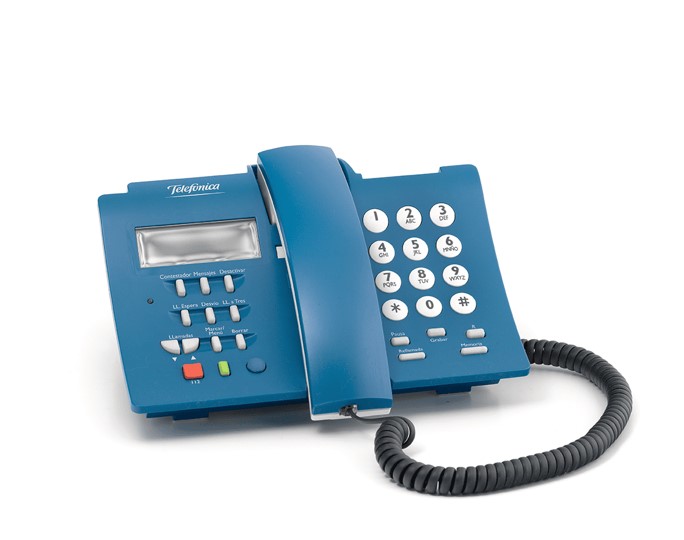
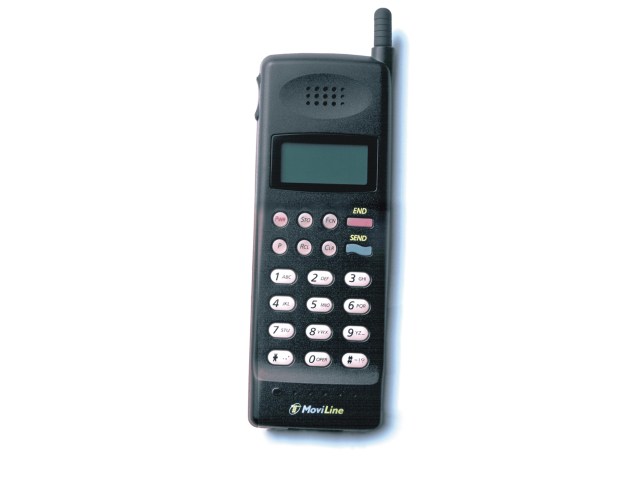
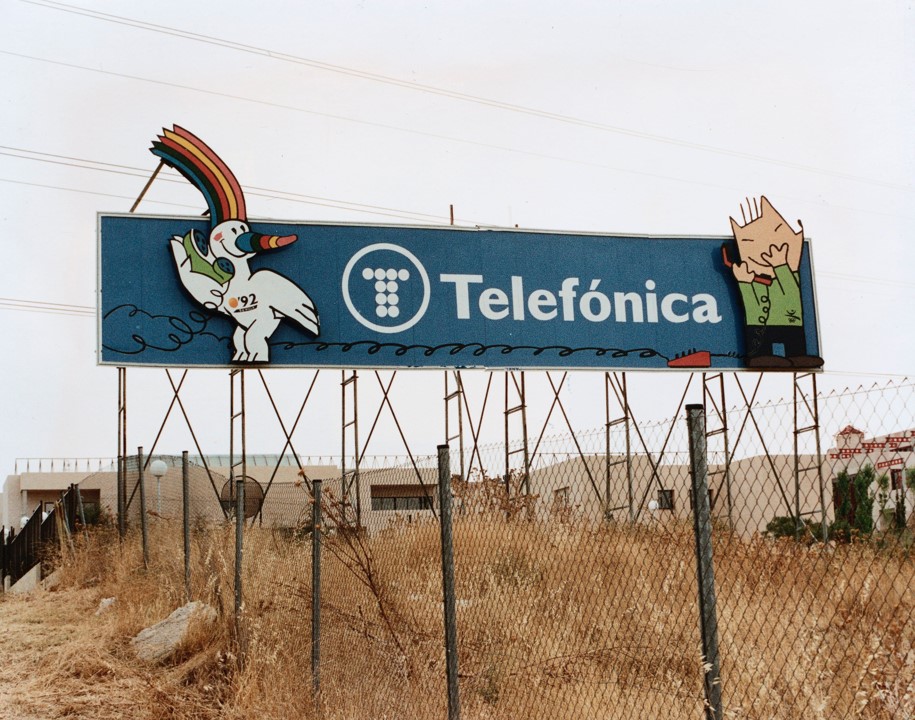


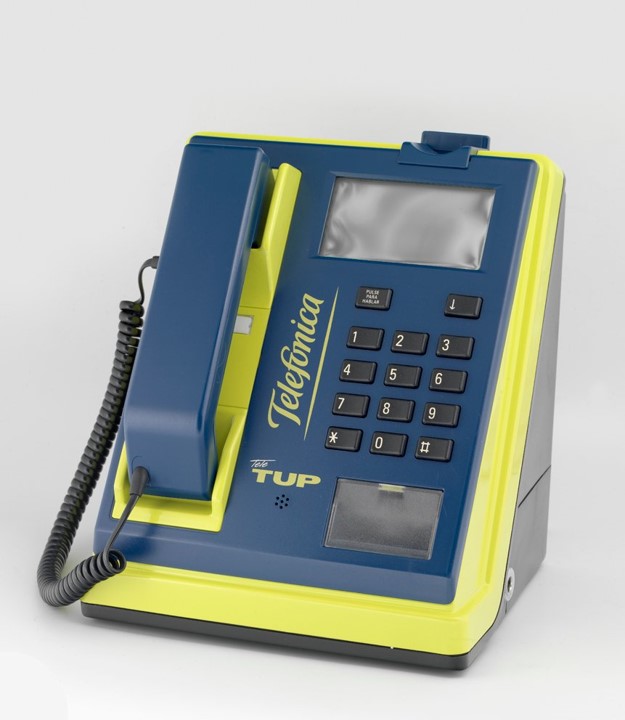

Telefónica Centenary
Don’t miss all the information about Telefónica’s history on our centenary website, https://www.telefonica100.com.
You can also take a closer look at the series by decades that we are publishing in our blog. Don’t miss out on what happened in the 80s.
